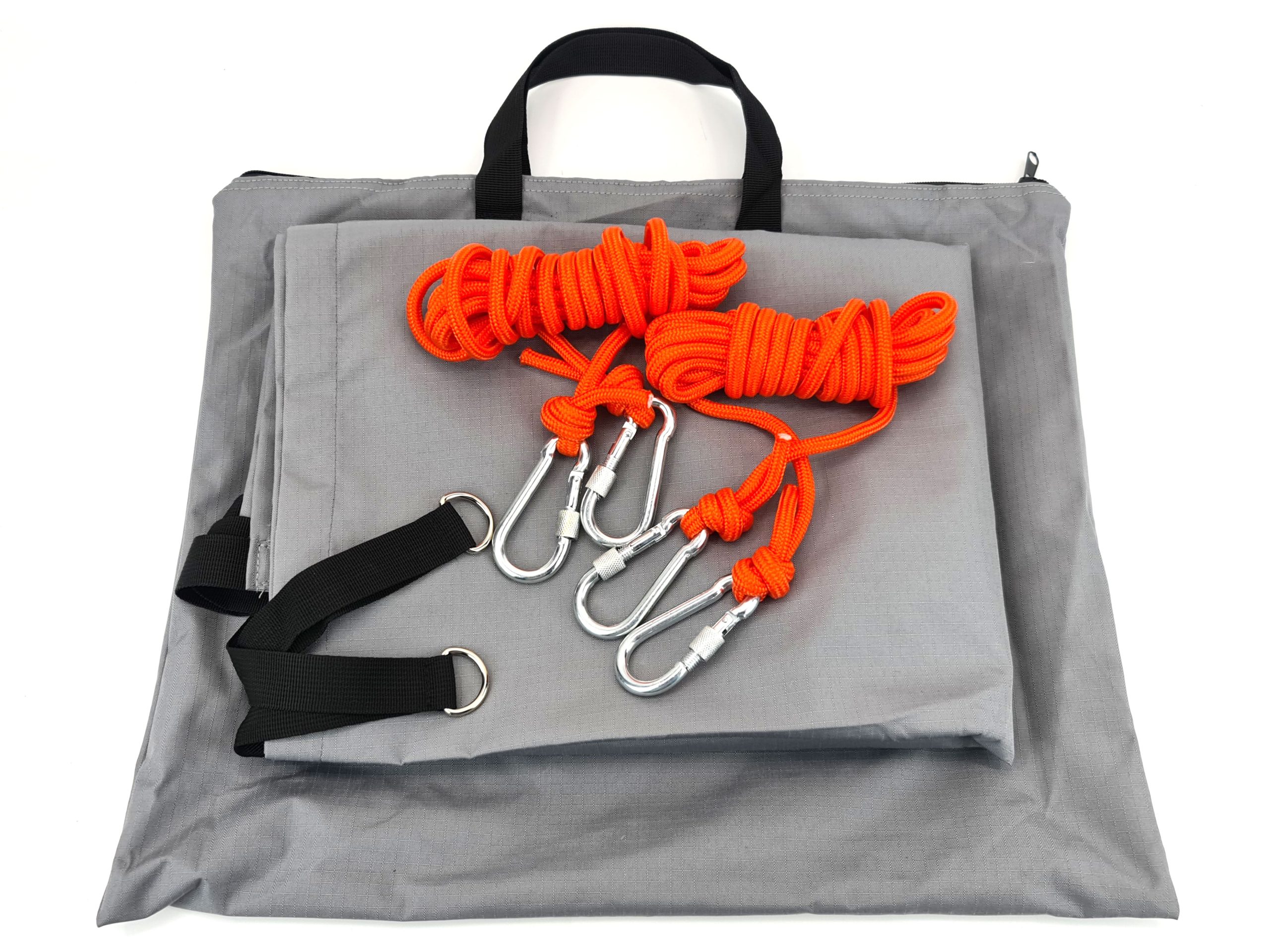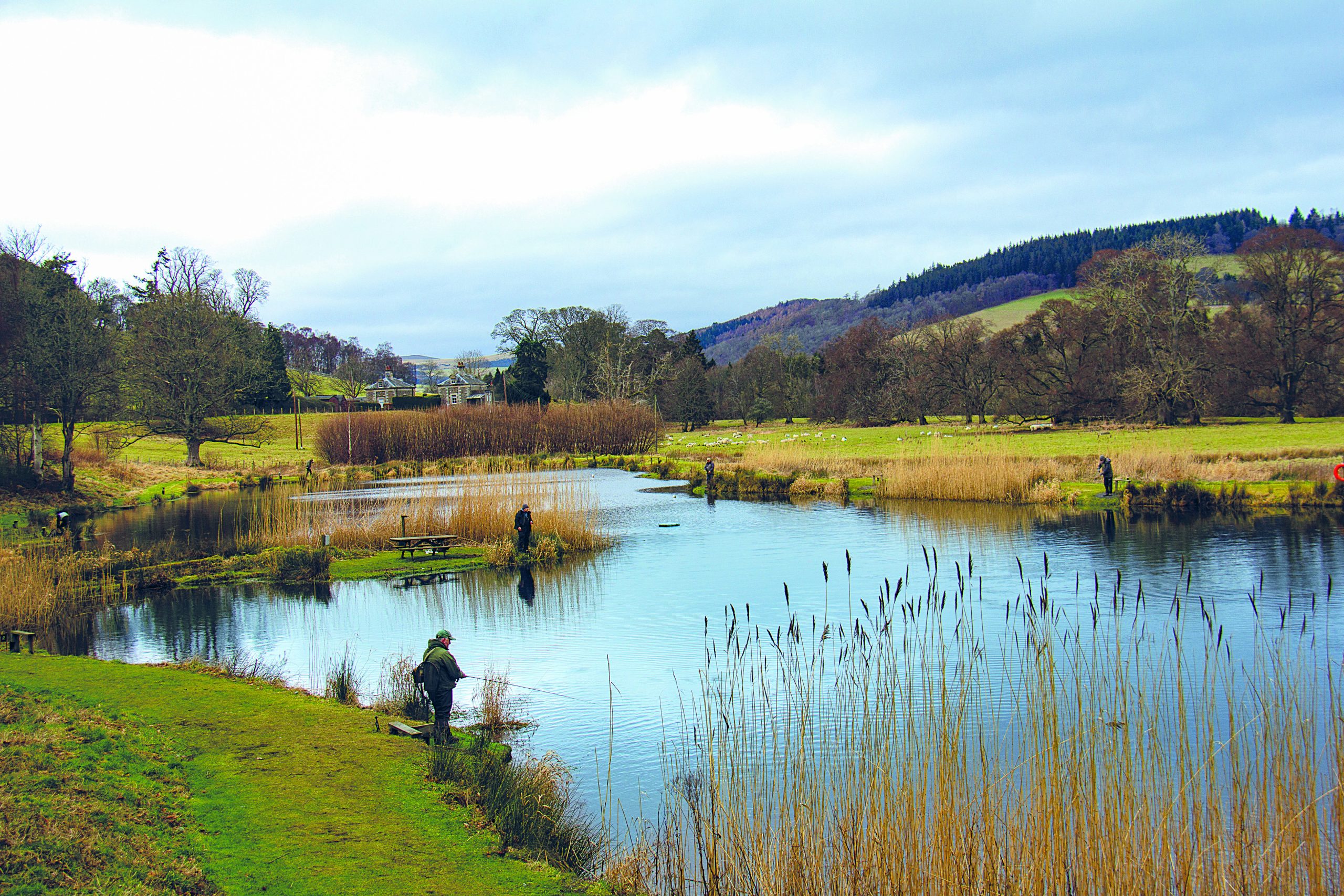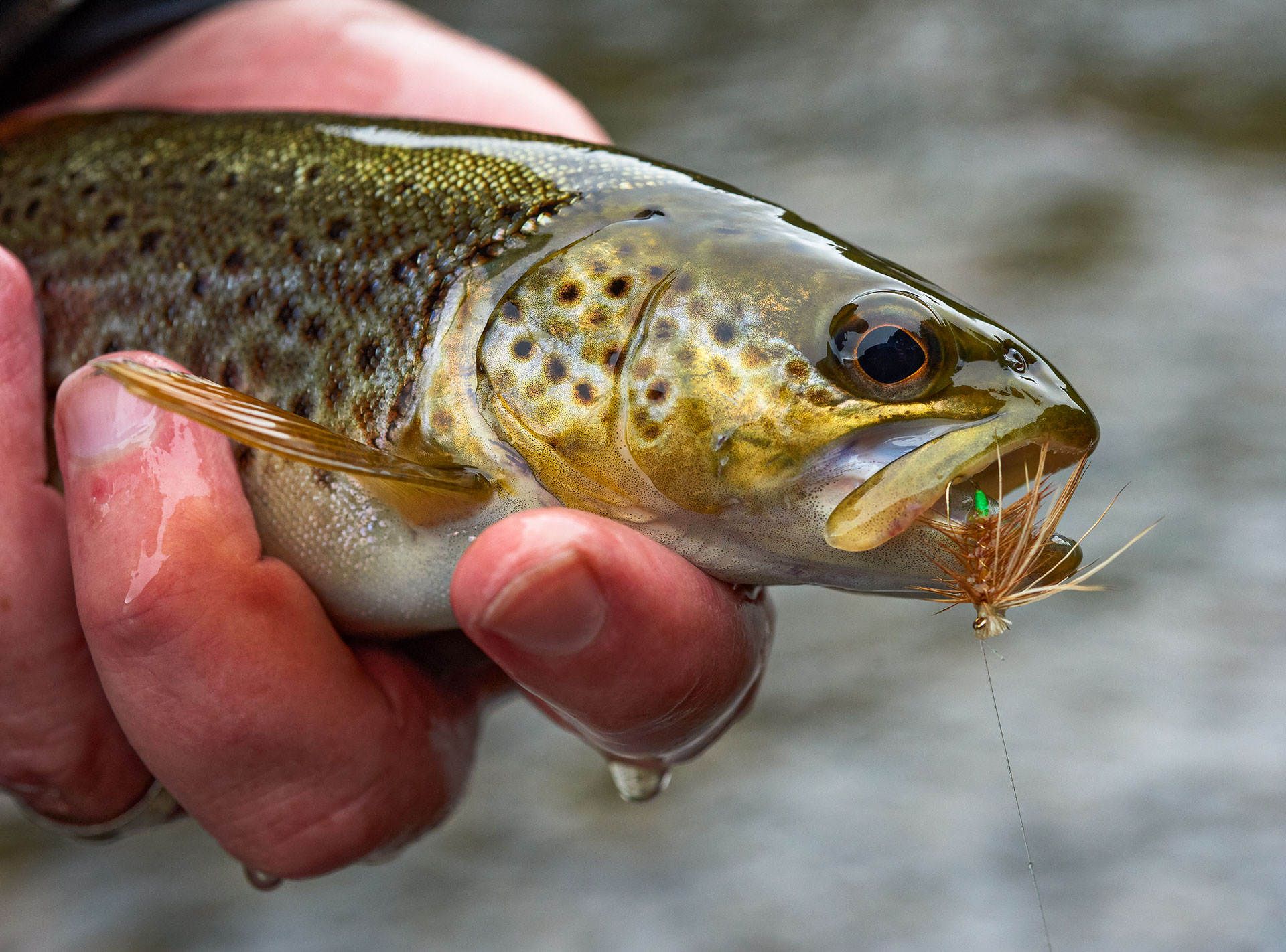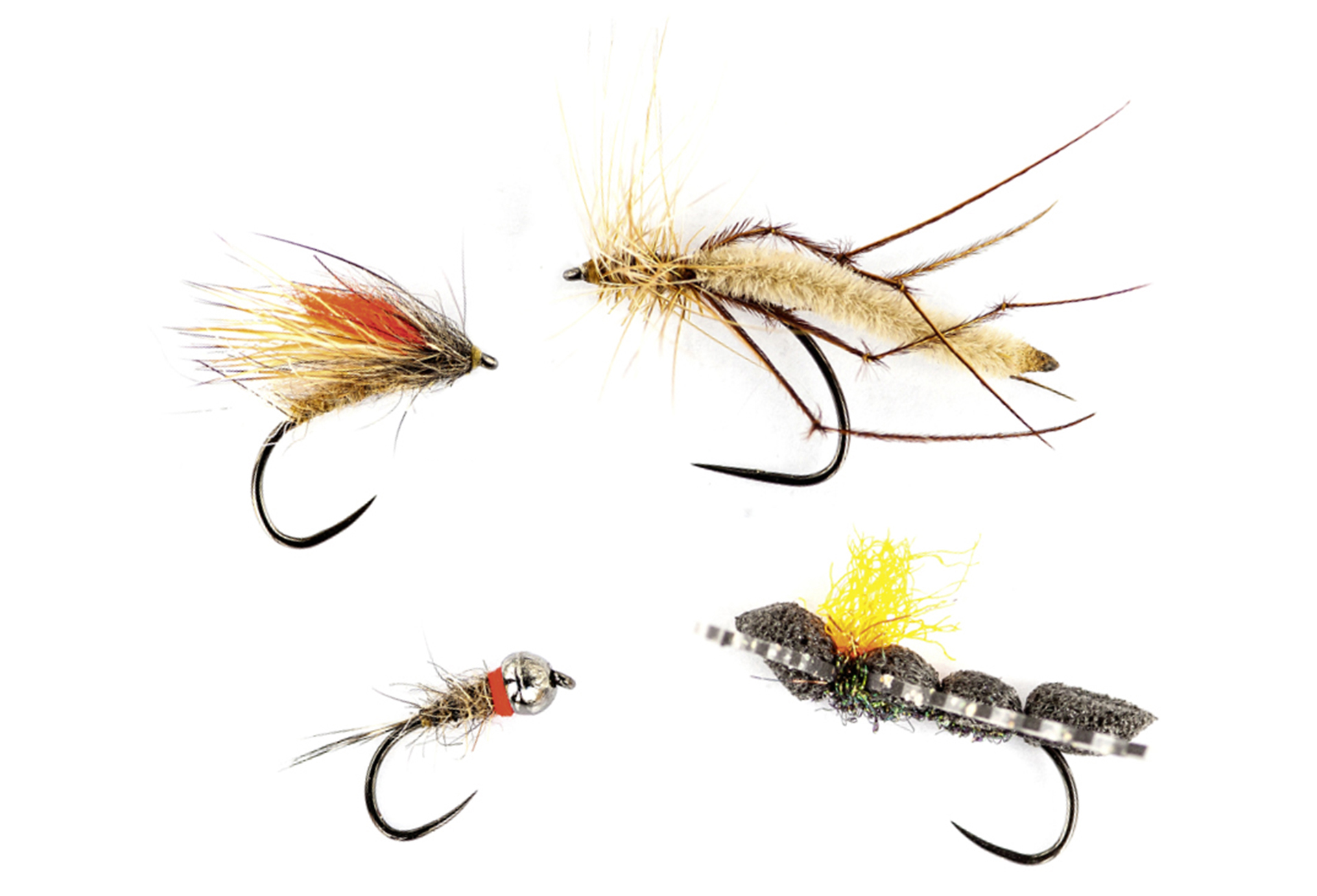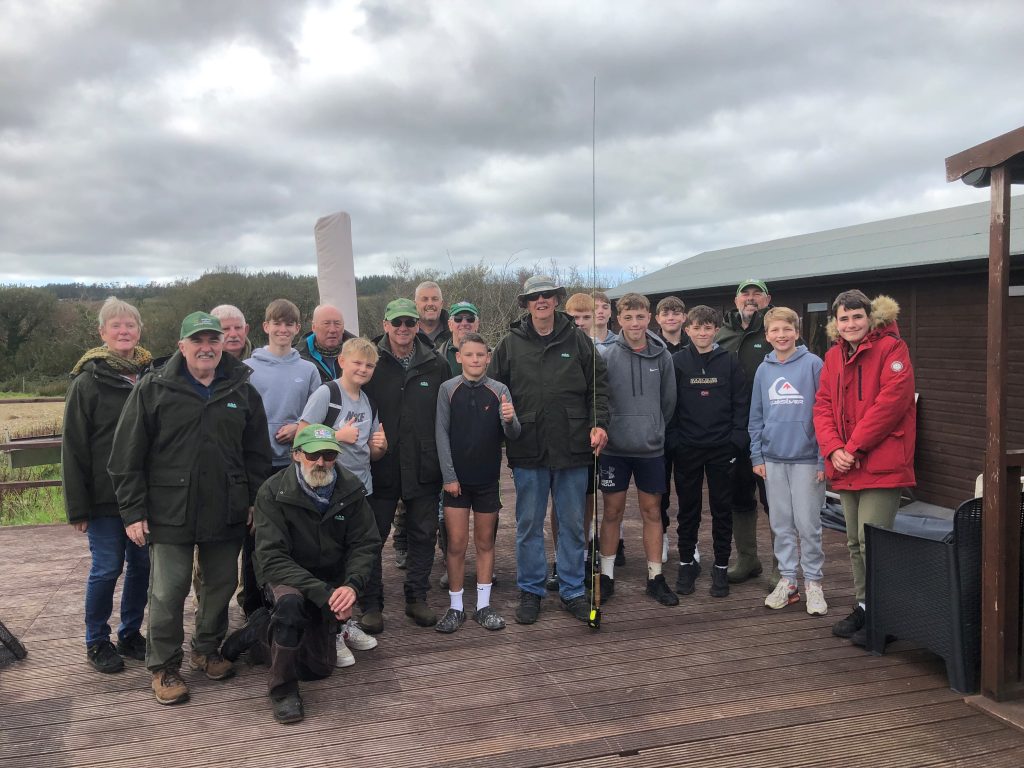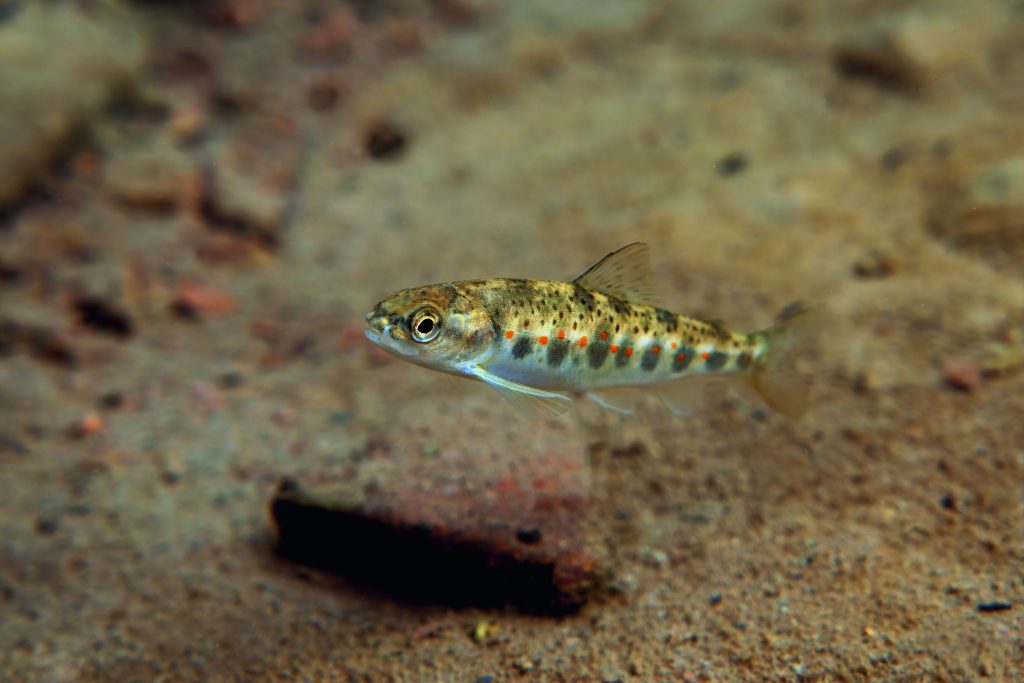How to catch wild trout from upland streams
The tackle and tactics you need for success on smaller rivers away from the crowds.
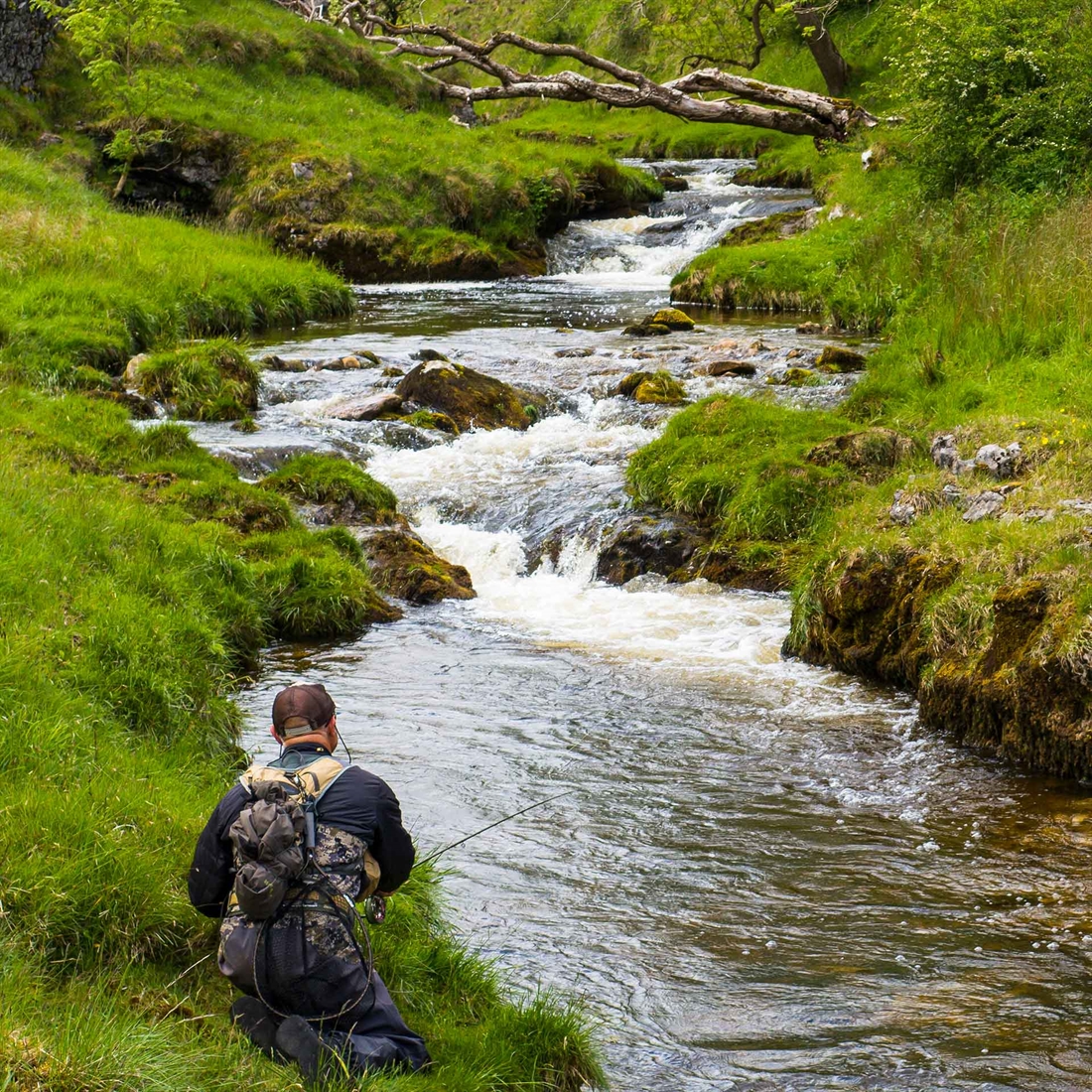
HIgh summer can be a trying time for the trout angler. It can feel for long periods like the river is asleep, the resident trout apparently in hiding for much of the day as picnickers, canoeists and wild swimmers descend upon the more accessible parts of our favourite places. However, the very upper reaches, far from population centres and major roads, offer the adventurous spirit an opportunity to avoid the “staycation” crowds and enjoy some entertaining sport in wild and unspoilt surroundings.
An adjustment of expectations is required to get the most out of headwaters sport. Trout in the uppermost reaches seldom grow large and with rough going underfoot and tight, sometimes tree-lined confines to contend with, one could be forgiven for wondering whether the rewards on offer merit the effort expended. However, what these fish lack in size, they make up for in their eagerness to come to the fly and in the spirited fight they give on suitably light tackle. A day spent exploring the top of your river system can be a joy, catching pristine fish which seldom see an angler’s fly from one season to the next.
Trout in wild places
Headwater habitat is usually characterised by steeper gradient water, consisting mainly of short pools and rough pocket water. Forget the comforts of leisurely wading and long dry-fly drifts, this is altogether less-civilised fare involving rock-hopping, scratching about in undergrowth, and improvised casts from awkward spots. The fish, though small, are as wild as the wind and demand as much respect as their counterparts downstream — they won’t tolerate heavy footfall and a less than stealthy approach, so be prepared to engage in some creeping and crawling from one casting position to the next.
Look for the deeper water. It’s unlikely there will be well-defined riffles and pools and much of the water will appear too skinny to hold trout of any substance, but surprising depth can be found where currents undercut banks below tree roots, or in the scoops around midstream boulders. These deeper pockets nearly always hold a fish or two and success can be had by targeting them with short, precise drifts of the fly.
The trout hereabouts eke out a marginal existence. The environment is unforgiving and subject to extremes: a pitiful series of oversized puddles during times of drought can become a raging torrent following heavy rainfall. Aquatic invertebrate populations tend to be sparse — a few stoneflies and caddis are often as good as it gets, and windblown terrestrial insects feature heavily on the menu. This results in opportunistic and free-rising trout which, provided they aren’t spooked, come readily to the fly. A comprehensive selection of imitations isn’t necessary — a handful of impressionistic patterns to cover upland staples such as daddy long legs, beetles and sedges is all that’s required for a good day’s sport.
Four flies to try
Clockwise from top left: Sighter Sedge, Daddy, Mini Chernobyl, HE Nymph.
| Where to fish |
|---|
|
Many wild, less-explored rivers can be accessed through local angling passport schemes, which provide affordable permits (tokens) to fish, as well as advice and maps. ■ Fish Pass: find unsung beats across Devon and Cornwall in a scheme run by the Westcountry Rivers Trust. Web: fishpassapp.co.uk |
Prepare for rough going
I favour a mobile approach. There is something compelling about the way a small stream draws you upstream with the promise that another fish awaits just around the next bend. Besides, the nature of the fishing lends itself to covering ground — with no large and complex pools to become absorbed by, focus on delivering a quick cast or two into likely looking pockets before moving on to the next and you may be surprised how many miles you can cover during a day. It pays to travel light and pack as much for an outdoor expedition as for a fishing trip. Typically, my rucksack will contain map and compass and plenty of fluids and food, rather than a plethora of fly-boxes and fly-fisher’s paraphernalia. A basic selection of terminal tackle will suffice — tippet, floatant, forceps, a small box of flies. You may choose to sweat it out in waders, although in the highest reaches, sturdy walking boots may prove more practical — it pays to do some homework on the nature of the water to be expected before deciding whether the “chesties” are required.
Choosing tackle
Keep your set-up light and delicate; a rod rated for lines in the 2-3 weight range is ideal and allows the smaller stamp of trout hereabouts to give a good account of themselves. Rod length depends largely on the surroundings — the close confines of a heavily wooded stream may require a wand as short as 6ft, while on more open moorland streams, rods of 8ft-9ft can often be accommodated, which can offer a benefit in allowing you to reach over complex currents and seams.
Leaders need not be long. The ability to tuck a dry-fly under a trailing branch, or into a short pocket, can be essential. Short, tapered leaders allow better control for brief drifts and when faced with swirling winds, which can be a feature of the upper catchment. Furled leaders are perfect for dry-fly fishing. Their direct and aggressive turnover is ideally suited to poking flies into tight spots and the supple nature of their thread-based construction allows them to fold into current seams, affording the all-important second or two of drag-free drift that is required when fishing into pocket water.
Nymphing can be effective, too, and I find that pocket-water lies are best tackled using a duo rig where a small tungsten-headed nymph is allowed to tumble unfettered beneath a buoyant dry-fly before being lifted off and placed into another likely spot. Takes can be lightning-quick and the instant detection afforded by the sighter fly will give you an edge. To maintain a compact leader length, the dropper fly is positioned little more than 2ft from the end of the tapered section, so the furled leader is better substituted for the less visible tapered butt of copolymer. Whether fishing dry-flies or nymphs, keep the tippet material fine — no more than 3lb-4lb breaking strain; wary fish may well shy away from the unnatural drift caused by thicker, stiffer tippet sections.


Discover the latest tactics from the UK’s leading fly-fishers every month in Trout & Salmon magazine. Subscribe or buy single issues here


